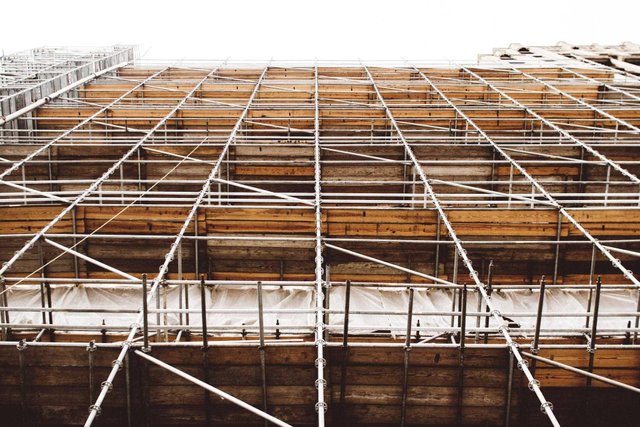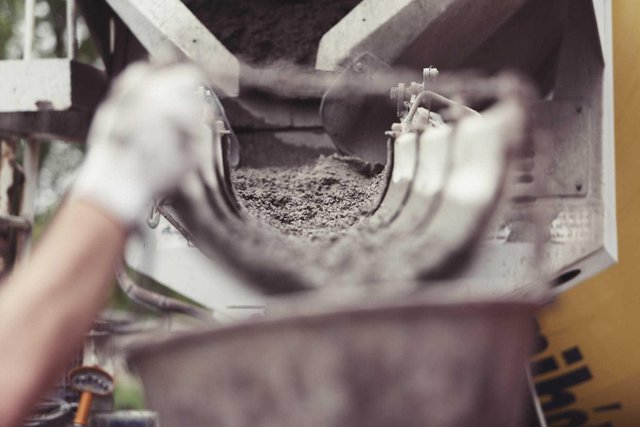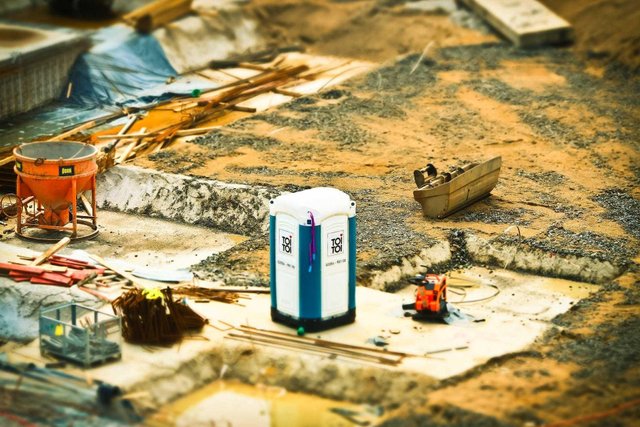Admixture is a material other than water, cement and aggregate that is added to concrete or mortar before or during stirring. Admixture is used to modify properties and concrete characteristics.
 Source
Source
The Purpose Of Using Mixing In Fresh Concrete Is:
- *Fixed concrete work
- Determining the water factor of cement on fresh concrete.*
- Reduce the use of cement.
- Prevent the occurrence of segregation and bleeding.
- Arrangement time of concrete binding.
- Increase the strength of hard concrete.
- Improve the impermeable properties of hard concrete.
- Improve durable properties in hard concrete including chemical resistance, friction resistance, and so on.
Admixture Type
In general, there are two types of added materials in the form of minerals (additives) and chemicals (chimical admixture). Mixing material added during stirring or casting. Additives are added during stirring. Added additives are usually intended to alter concrete behavior during execution or to improve concrete performance during execution. For additional materials added more cementing, so used with the aim of improving the performance of its strength.
 Source
Source
The Mixture Is Divided Into Seven Types, Namely:
- Water Reducing Admixture (WRA)
Adding materials that work to reduce water use, stirring to produce concrete with a certain consistency. By using this type of material added will be achieved three things, namely:
Just add / improve your work skills. By adding WRA into the concrete then with the same fas (moisture content and cement) we will get concrete with a higher degeneration value. With higher slope, fresh concrete will be more easily poured, stirred and compacted. As the amount of cement and water does not decrease and work power increases, concrete strength is stronger than concrete without WRA.
Increase the compressive strength of concrete. By reducing / reducing the fas (the amount of water decreases, the amount of cement remains) and adding WRA to fresh concrete will be obtained with high quality concrete. From some research results with lower fas but high working ability hence increasing compressive strength.
Reduced costs (economical). By adding WRA and reducing the amount of cement and water, concrete will have the same processing capabilities as concrete without WRA and the compressive strength is the same as concrete without WRA. So concrete is more economical because with the same strength it takes less cement.
Adding material that works to slow down the binding process of concrete. Usually used during hot weather conditions, extending the time for compaction, hauling and casting.
Accelerating Admixtures This type of supplementary material serves to accelerate the binding process and the development of the initial strength of the concrete. This material is used to shorten the binding time of cement so as to accelerate the achievement of concrete strength. The types of accelerators include: calcium chloride, bromide, carbonate and silicates. In areas where high corrosion is not recommended to use a calcium chloride type accelerator. The maximum dose that can be added to the concrete is 2% of the weight of the cement.
- Reduced Water and Retarding Admixture
The type of material added double is to reduce the amount of stirring water required in the concrete but still obtain the mortar with a certain consistency while slowing down the initial binding process and hardening of the concrete. By adding this material to the concrete, the amount of cement can be reduced in proportion to the amount of water reduced. The material is so aqueous that in planning the amount of concrete mixing water, the weight of this mixture should be added as total water weight to the concrete.
- Water Reduces and Accelerates Adixation
The type of additional material that is doubled is to reduce the amount of stirring water required in the concrete but still obtain the mortar with a certain consistency while accelerating the initial binding process and hardening of the concrete. Concrete added with this type of additive will produce concrete with fast binding time and low water content but still applicable. By using this material it is expected that the concrete has high compressive strength with faster binding time (concrete has high initial strength).
- Water Reduction, High Mixing
This type of supplementary material serves to reduce the amount of water mixer required to produce a concrete with a certain consistency of 12% or more. By adding this material to the concrete, it is expected to reduce the amount of stirring water in a sufficiently high amount, so that the expected strength of the concrete is high with little water, but the level of concrete work ability is also higher. This type of additive is a superplasticizer.
Superplasticizers include: Melamine melamine sulphonate formaldehyde with 0.005% chloride, formaldehyde naphthalene sulfonate, modified lignosulfonate without chloride content. This material can reduce the amount of water in the concrete mix and increase the deterioration of concrete up to 208 mm. The recommended dose is 1% to 2% of the weight of the cement.
- Water Reducing, High Range Retarding Admixtures
The type of additive that serves to reduce the amount of mixing water required to produce a concrete with a certain consistency, of 12% or more at the same time, inhibits binding and hardening of concrete. This material is a superplasticizer combination by slowing down the binding time of concrete. Used when work is narrow due to limited resources and work space.
Additional mineral material types (additives) Additional mineral types added to concrete are intended to improve the performance of compressive strength of concrete and more cementing properties. The concrete of the fine grains in the aggregate becomes cohesive. To overcome this condition is usually added additive material in the form of fine granular solids. Addition of additives is usually done on reinforced concrete, where the concrete does not have fine aggregates and concrete with regular cement level but needs to be pumped at great distances. Types of additives include: puzzollan, fly ash, slag and silica fume.
 Source
Source
The Advantages Of Using Additives Are:
- Fixed concrete work
- Reduce heat hydration
- Reduce the cost of concrete work
- Increases resistance to sulfate attacks
- Increases resistance to alkali-silica reactions
- Increased durability of concrete
- Increase the compressive strength of concrete
- Increase the life of concrete
- Reduce depreciation
- Make concrete more waterproof "porosity and water absorption in low concrete"
Another commonly used additive is Air Entraining Agents (AEA). There are two types of AEA, a type of detergent and not a detergent.
Type of AEA detergent in general is a type of detergent, the active substance to the surface. This substance is usually in the form of organic substances as raw material of soap, so when stirred with water will become foam and this foam will be scattered in the concrete. These bubbles are between the grains of cement and the aggregate that serves as a ball roller so that the concrete mixture becomes more easily stirred. The addition of AEA makes the concrete has a small shrinkage properties and makes the concrete more impermeable. The material commonly used to make AEA is vinsol resin which is a compound of abiet acid (abietic acid) or commonly called with caustic soda.
Type not detergent: This type is usually a fine aluminum powder. This powder when mixed with water on the concrete will react to form air bubbles of hydrogen gas. Usually used also a stabilizer (Sodium Stearate), so the bubbles can spread evenly and stable.
Use of Admixture In Concrete
Admixture or concrete additives are used to enhance or enhance the concrete properties for the better. So just as a relief material only. So mixing alone is not a substance that can make bad concrete to be good.
There are several considerations in the use of mixtures on concrete, namely:
- Don't use a mixture if you do not know the purpose
- Adixation will not make bad concrete into good concrete
- The dough can change more than one property of the concrete mix
- Supervision of this material is very important, including the supervision of its effect on the concrete
 Thank you, this is my writing for this time, if there are words that are not good, not polite, not clear. I can only apologize. Perfection belongs only to God, I am only human who can not escape from mistakes. So, greetings from me @youngky. For my friends in steemit and for all my faithful followers.
Thank you, this is my writing for this time, if there are words that are not good, not polite, not clear. I can only apologize. Perfection belongs only to God, I am only human who can not escape from mistakes. So, greetings from me @youngky. For my friends in steemit and for all my faithful followers.


About The Science I Have Written:
Science: | Science: | Science: | Science: | Science: | Science: | Science: | Science: | Science: | Science: | Science: | Science: | Science: | Science: | Science: | Science: |
Reference:
1, 2, 3, 4, 5, 6






good post buddy :)